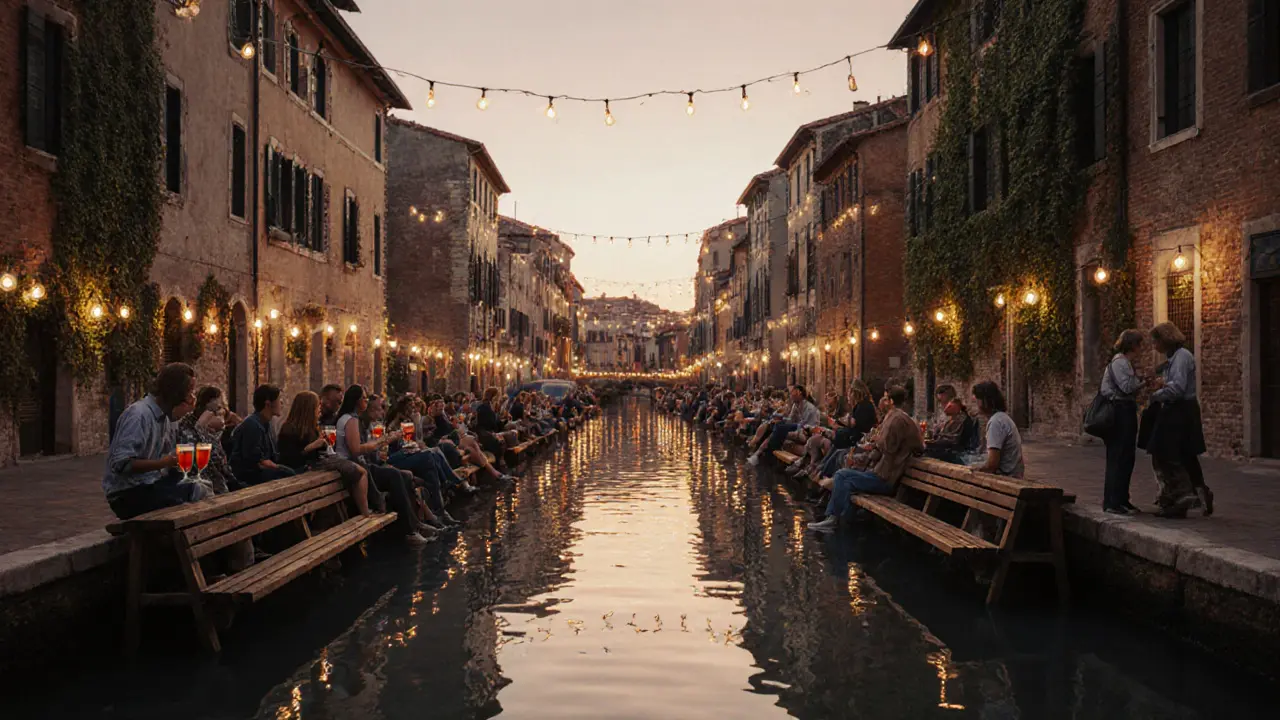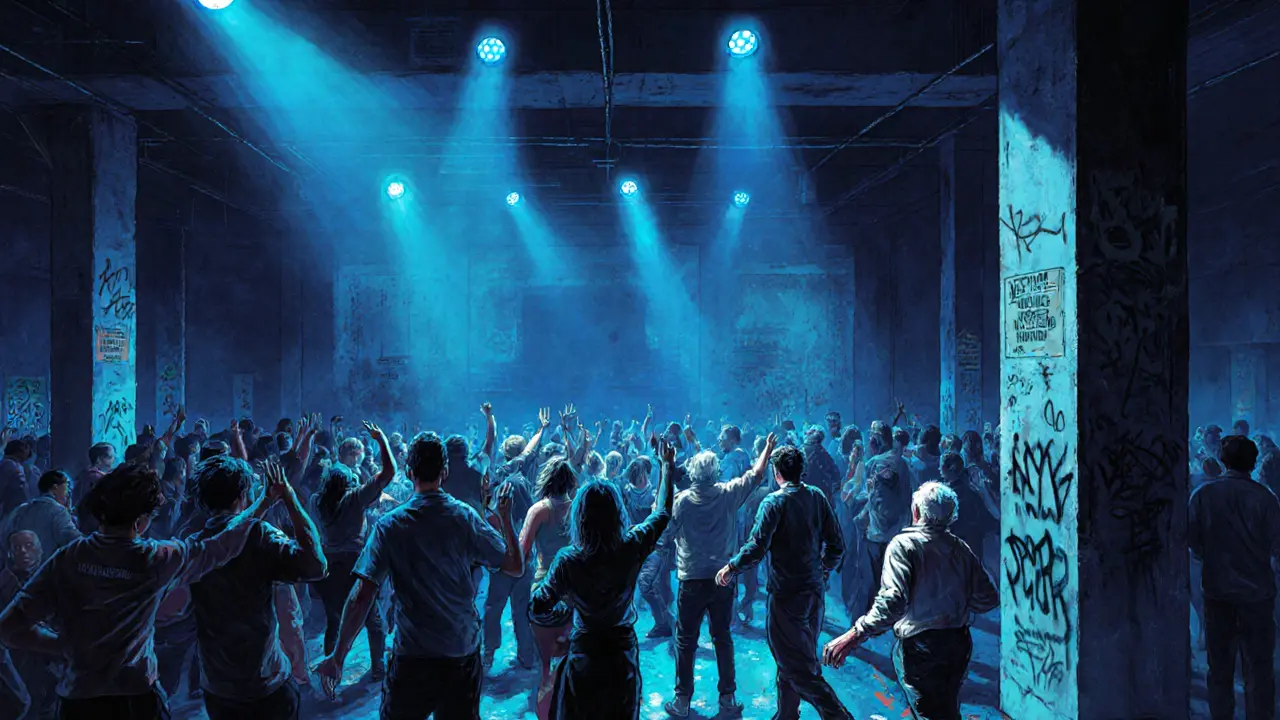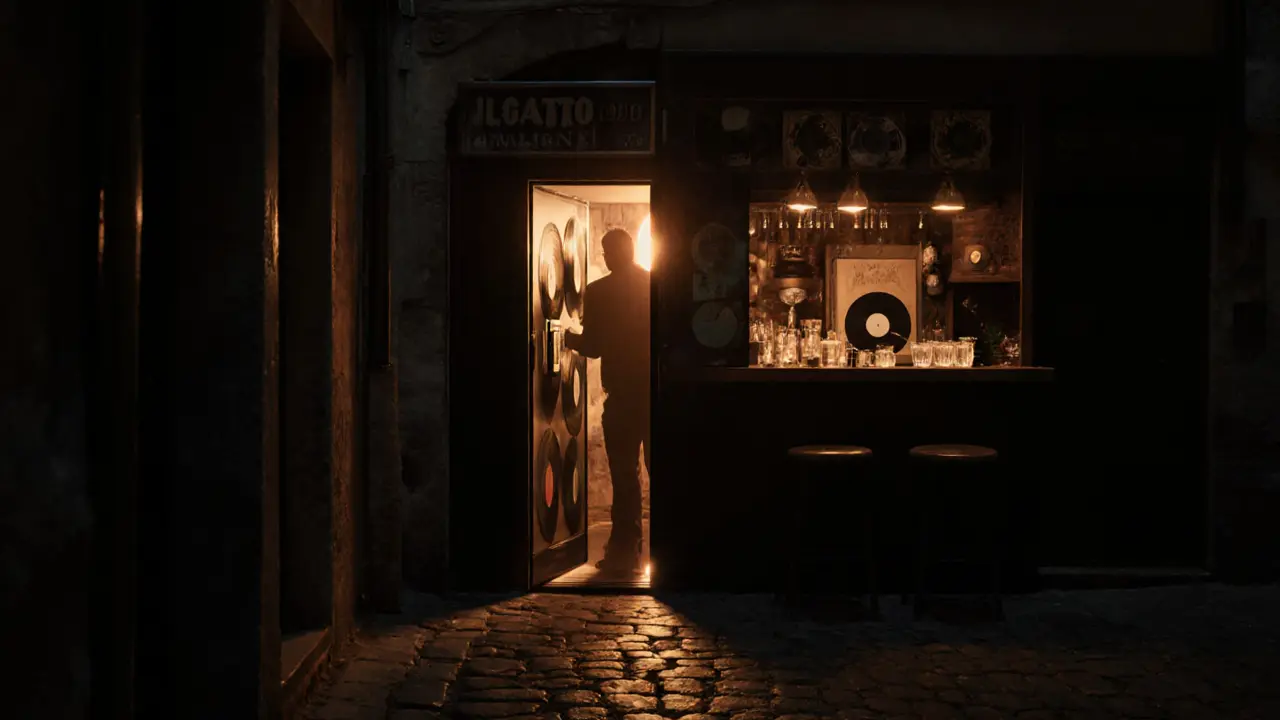Nightlife in Milan: Your Ultimate Guide to the City's Hottest Bars, Clubs, and Late-Night Spots

Nov, 15 2025
Milan doesn’t sleep when the sun goes down. While the world knows it for fashion, design, and fine dining, the city’s real pulse kicks in after 10 p.m. This isn’t just another European nightlife scene with copycat clubs and overpriced cocktails. Milan’s nightlife is sharp, stylish, and surprisingly diverse-ranging from hidden speakeasies to rooftop dance floors with views of the Duomo. If you’re looking for a night out that feels exclusive without being pretentious, you’ve come to the right place.
Where the locals go after work
Forget the tourist traps around Piazza del Duomo. Real Milanese nightlife starts in Navigli, the canal district that turns into a living party after sunset. By 9 p.m., the canals are lined with locals sipping Aperol spritzes on wooden benches. The bars here aren’t loud clubs-they’re neighborhood joints with good music, cheap wine by the glass, and zero attitude. Try La Bicocca for craft cocktails made with local herbs, or Bar Basso, where the Negroni was invented in 1945 and still tastes better here than anywhere else.Walk just five minutes north and you’ll hit the Brera district. It’s quieter, more artsy, and packed with wine bars that feel like your friend’s living room. Enoteca Pinchiorri doesn’t take reservations, but the staff will slide you a glass of Barolo if you wait patiently at the counter. This is where Milanese professionals unwind after long days-no neon lights, no bouncers, just real conversation and well-paired cheese boards.
The club scene: From underground to luxury
If you’re after dancing until sunrise, Milan’s club scene delivers in ways you won’t find in Rome or Florence. The city has two distinct vibes: the high-end and the raw.At the top end, Armani/Silos hosts exclusive parties on weekends, often with international DJs spinning in a space designed by Giorgio Armani himself. Entry is strict-no sneakers, no hoodies, no tourists without a local invite. But if you get in, you’re dancing under crystal chandeliers with models, designers, and tech founders from Silicon Valley.
For something grittier, head to Magazzini Generali in the Porta Venezia area. This converted warehouse hosts techno and house nights with no dress code, no cover charge before midnight, and a crowd that’s all about the music. It’s the kind of place where you’ll find a 60-year-old professor dancing next to a 22-year-old DJ from Berlin. The sound system? One of the best in Europe. The crowd? Always changing, never boring.
Don’t miss La Scala Club inside the Teatro alla Scala opera house. Yes, the same building where Verdi premiered his operas. On Friday nights, it transforms into a chic lounge with live jazz and a velvet-rope vibe. It’s not for everyone-but if you’ve ever wanted to sip prosecco where Toscanini once conducted, this is your moment.
Hidden gems and secret spots
Milan’s best nights happen in places you won’t find on Google Maps. The city thrives on word-of-mouth spots. Look for unmarked doors, staircases behind bookstores, or entrances disguised as laundromats.Il Gatto Nero is a speakeasy hidden behind a refrigerator door in a tiny alley near Corso Buenos Aires. You need a password-ask a local bartender for tonight’s code. Inside, it’s dim, cozy, and packed with vinyl records. The cocktails? Hand-chipped ice, house-made bitters, and zero pretension.
Another secret? Bar della Pace, tucked under a railway arch in the Lambrate neighborhood. It’s open until 5 a.m. on weekends, serves cheap beer, and has a backyard with string lights and a mini-garden. Locals call it “the last refuge of sanity.” You’ll find artists, students, and ex-rock musicians here, not influencers.

What to wear-and what not to
Milan doesn’t require a tuxedo, but it does demand effort. You won’t get in anywhere decent wearing flip-flops, baseball caps, or sweatpants. The city has a quiet dress code: clean lines, dark tones, well-fitted clothes. Even if you’re heading to a warehouse party, ditch the baggy jeans. Opt for slim-fit black trousers, a simple button-down, or a tailored jacket. Women rarely wear flashy dresses-think sleek silhouettes, minimal jewelry, and polished shoes.Why? Because Milanese style isn’t about showing off. It’s about looking like you put thought into it. You don’t need designer labels-just good tailoring and attention to detail. A $20 thrift-store blazer, properly pressed, beats a $500 logo tee any night.
When to go-and when to skip
Weekends are packed. Thursday and Friday nights are the sweet spot: busy enough to feel alive, but not so crowded that you’re stuck in line for 45 minutes. Saturday nights? Only go if you’ve got a reservation or a local friend who can get you in.July and August are quiet. Most Milanese leave the city for the coast. If you’re here then, you’ll find empty streets and closed clubs. The real season runs from September to June. October through December is peak-fashion weeks bring in international crowds, and the city turns electric.
Avoid Mondays. Almost everything shuts down. Even the bars that stay open late on weekends close early on Monday. It’s not a party night-it’s a recovery night.
How to get around after dark
Public transport runs until 1:30 a.m. on weekdays and 2:30 a.m. on weekends. The metro stops running earlier, but night buses (N-lines) cover most key areas. Download the ATM app-it shows real-time bus arrivals and routes.Taxis are expensive but reliable. Uber works, but local services like Free Now or Beat are cheaper and more common. If you’re heading to Navigli or Brera, walk. The city is safe at night, and the streets are well-lit. Just avoid the outskirts near Lambrate station after 2 a.m.-it’s fine during events, but empty and sketchy otherwise.

What to expect at the door
Bouncers in Milan aren’t there to be rude-they’re there to protect the vibe. If you look like you’re trying too hard (loud group, excessive alcohol, bad attitude), you’ll get turned away. If you’re calm, dressed well, and respectful, you’ll walk right in.Most clubs don’t charge cover before midnight. After that, expect €10-€25. Some exclusive spots charge €50 or more-but they often include a free drink. Always ask if there’s a guest list. If you’re staying at a hotel, ask the concierge. They usually have access.
Drinks you must try
Milan isn’t just about cocktails. The city invented the aperitivo culture-and it’s still the best place to experience it.- Aperol Spritz: The classic. Order it with Prosecco, not soda water. Ask for it "con ghiaccio"-with lots of ice.
- Negroni: Bitter, strong, perfect. Try it at Bar Basso or Caffè Cova.
- Campari Soda: Simple, refreshing, and wildly popular with locals. Just Campari and soda, served with an orange slice.
- Prosecco: Not just for toasts. Drink it by the glass at any wine bar. Look for "Prosecco Superiore DOCG"-it’s better, and not much more expensive.
And don’t forget the food. Most bars offer free snacks with your drink during aperitivo hours (6-9 p.m.). Think mini sandwiches, olives, fried risotto balls, and tiny pizzas. It’s not a buffet-it’s enough to keep you from passing out before midnight.
Final tip: Don’t rush it
Milan’s nightlife isn’t about hitting five clubs in one night. It’s about slow evenings-starting with a drink at sunset, moving to dinner, then dancing until dawn. The magic happens in the transitions. Walk between spots. Talk to strangers. Let the city guide you.One night, you might end up at a jazz bar in Brera. The next, you’re dancing in a warehouse with strangers who become friends by 3 a.m. That’s Milan. Not flashy. Not loud. But unforgettable.
Is Milan nightlife safe for tourists?
Yes, Milan is one of the safest major European cities for nightlife. The streets are well-lit, police patrols are common in popular areas, and most clubs have security staff. Avoid isolated alleys after 2 a.m., especially near Lambrate or Porta Romana stations. Stick to the main districts-Navigli, Brera, Porta Venezia, and the city center. Never leave your drink unattended, and don’t follow strangers to unknown locations.
What’s the best night to experience Milan’s party scene?
Thursday and Friday are ideal. The energy is high, but not overwhelming. Saturday is packed and often requires reservations or guest lists. Sunday nights are quiet-most clubs close early. If you want to feel like a local, aim for Thursday. You’ll find a mix of students, professionals, and tourists, all relaxed and enjoying the night without the pressure of a weekend crowd.
Do I need to speak Italian to enjoy Milan’s nightlife?
No, but knowing a few phrases helps. Most bartenders and club staff speak English, especially in tourist areas. Saying "Grazie," "Un aperitivo, per favore," or "Dove si va dopo?" (Where do we go after?) will get you better service and sometimes even a free snack. Locals appreciate the effort-even if your accent is terrible.
Are there any age restrictions for clubs in Milan?
Yes. Most clubs require you to be at least 18, but many high-end venues enforce a 21+ rule. Always carry your passport or EU ID card-driver’s licenses from outside the EU are often not accepted. If you look under 25, you’ll be asked for ID. Don’t argue. Just show it politely.
Can I find vegan or vegetarian options in Milan nightlife spots?
Absolutely. Milan is one of the most vegan-friendly cities in Italy. Most aperitivo bars now offer plant-based snacks-think vegan arancini, chickpea croquettes, and dairy-free cheese boards. At clubs like Magazzini Generali, you’ll find vegan pizza and falafel wraps served late at night. Ask for "opzioni vegane"-you’ll be surprised how common they are.
How much should I budget for a night out in Milan?
You can have a great night for €30-€50. That covers aperitivo (drink + snacks), dinner, one club entry, and a taxi or bus ride. If you’re going to luxury clubs or ordering premium cocktails, budget €70-€100. Skip the touristy bars near the Duomo-they charge double for the same drink. Stick to Navigli, Brera, and Porta Venezia for real value.